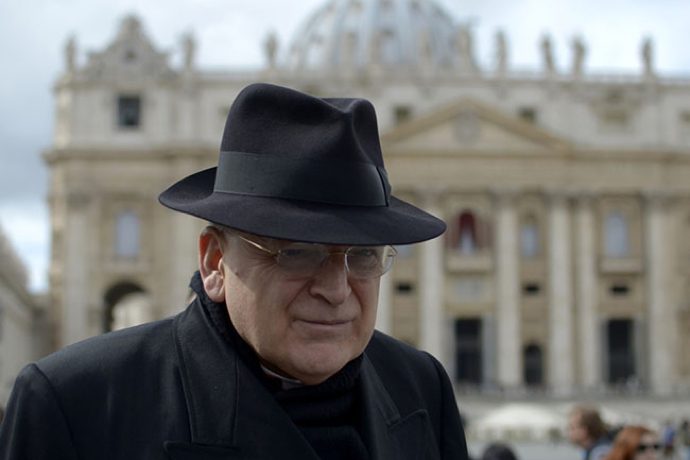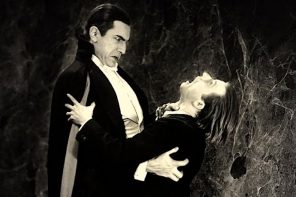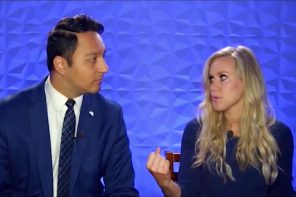What should we make of the recent blockbuster revelations in the New York Times about Steve Bannon’s ties to the Vatican—and the possible parallel between conservative hardliners at the Vatican seeking to roll back the Francis era and the ascent of the “alt-right” in the United States?
That, it seems, depends on who you ask.
According to the Times, Bannon and archconservative Cardinal Raymond Burke had a “meeting of the hearts” back in 2014 over their belief that Islam poses an existential threat to a secularized West (and their shared dissing by political elites who fail to heed their warnings). And it makes the case that Bannon and the “alt-right” are in league with Burke and Vatican hard-liners looking to undermine Pope Francis, drawing parallels between the populist surge that elevated Donald Trump and protests that Francis is an authoritarian in league with global elites who has “removed priests; decapitated the Knights of Malta” and “ignored Cardinals” to implement a radical Marxist, pro-Islam agenda on the backs of the white working class of Europe.
It’s the second of two articles detailing Bannon’s courtship of the Vatican as an ally in the fight to “buoy Europe’s surging anti-immigrant parties” and make common cause with social traditionalists. (Which, in a delicious irony, reveals that Breitbarts’ “man in Rome” is a former priest who had an illegitimate child with the daughter of former U.S. Vatican Ambassador Mary Ann Glendon. She headed the Vatican delegation to the 1995 UN Conference on Women, where she condemned the use of contraceptives as part of the encroachment of the global elite on traditional family values.)
This fight over the soul of the Vatican, as E.J. Dionne points out, is a continuation of long-simmering battles within Catholicism between progressives and conservatives:
Horowitz’s story brought into relief the struggle inside the church—and particularly within American Catholicism—over the pope’s stewardship, his emphasis on battling poverty, his insistence on the importance of welcoming immigrants and refugees, his relative openness to modernity.
Meanwhile, writing in Commonweal, John Gehring notes that irony that Bannon, who “knows far less about those struggling on the peripheries than his own church,” would dare pit himself against Francis as a champion of the people, much like Republican fat-cats in the U.S. wear the mantle of champions of the oppressed white working class:
While Bannon made millions at Goldman Sachs and later pocketed massive royalties from Seinfeld episodes, Pope Francis was walking with the poor in the villas miserias of Buenos Aires. Bannon and Trump are rolling back regulations on the financial industry to help those struggling hedge-fund managers on Wall Street. Meanwhile, Catholic clergy, nuns, and faith-based organizers spend their days with families devastated by the financial crisis, fighting for affordable housing and living wages.
Not surprisingly, Ross Douthat pooh-poohs any such parallels:
There is a natural desire for a unifying theory of all the disturbances in Western institutions, a way to make all the conflicts into one so that an unstable situation can be distilled and understood. Which is why, over the last week, there’s been an attempt to unite American politics and Vatican intrigue into a single melodrama, in which the same populist forces that elevated Donald Trump are supposedly trying to pull Pope Francis down.
Douthat completely downplays the conservative side of the ledger, calling the Bannon–Burke connection “conspiratorial nonsense” that consists of nothing more than “a friendly 2014 meeting, a few secondary connections and some broad commonalities between their respective worldviews.”
What isn’t conspiratorial nonsense, according to Douthat, is “radical” Pope Francis’ plot to destroy the Catholic Church, which makes the opposition of the Catholic right not reactionary, but necessary:
Friendly media coverage casts the pontiff as a man of the center, an ecclesiastical equivalent of Angela Merkel or Barack Obama or David Cameron, menaced by authoritarians to his right. But he is no such thing, and not only because his politics are much more radical and apocalyptic than any Western technocrat. In the context of the papacy, in his style as a ruler of the church, Francis is flagrantly Trumpian: a shatterer of norms, a disregarder of traditions, an insult-heavy rhetorician, a pontiff impatient with the strictures of church law and inclined to govern by decree when existing rules and structures resist his will.
Douthat dismisses Burke as the equivalent of Bernie Sanders, the most vocal, visible part of an oppositional faction in the Vatican that goes much deeper, and, in his opinion, is more serious. According to Douthat, “the mainstream of conservative Catholicism is not reactionary and not remotely Trumpian” but the radicalism of Pope Francis threatens to spark the growth of a more reactionary Catholic right. So if reactionary forces do eventually destabilize the church, it won’t be the fault of Bannon or Burke but of Francis.
What’s missing from all these analyses is a sense the inroads far-right Catholic organizations and other conservative “pro-family” groups, have made in European political institutions in recent years. These groups push an explicitly anti-abortion, anti-LGBT rights, pro-“natural” family agenda in the EU, at the European Commission, and other political bodies. As Sophie in ‘t Veld, a Dutch member of the European Parliament, has noted:
We are witnessing the emergence of the European equivalent to the “religious right” in the US. Areas affected by this rise include women’s rights, gay rights and sexual and reproductive health rights as well as healthcare (such as contraception, abortion, condoms and IVF). … Invoking religious freedom, the lobbies are negotiating exceptions to the ban on discrimination, including discrimination against gay people, or for the right of confessional schools to discriminate.
These groups are making common cause with far-right political parties, helping to create an institutional framework for the rise of far-right, pro-traditional family nationalism in Europe. In this context, Bannon’s outreach to the Vatican is neither an outlier (which as Dionne and Gehrig assert will likely fail in the face of Francis’ strength and popularity) nor, as Douthat asserts, a sideshow from the issue of how Francis is radically remaking the church. It’s part of a calculated, long-term strategy to link conservative religion to right-wing populism.
As Professors Nadia Marzouki, Duncan McDonnell and Olivier Roy argued in their book Saving the People:
Populists have succeeded in marrying the old Orientalist condemnation of the innate hypocrisy of the ‘Moor’ with contemporary concerns about immigration, international terrorism and the circulation of jihadis from Europe to the Levant (and vice versa).” Liberal elites, meanwhile, “who are accused of always favouring minority rights over those of the ‘the people’”, are in turn blamed for siding with Muslims.
It’s temping, on account of their very outlandishness, to dismiss these efforts. After all, a movie plot involving a pudgy Wall Street pseudo-populist who masterminds the rise of an authoritarian puppet in league with shadowy forces at the Vatican would be dismissed as laughable. But if recent history is any judge, we dismiss these plots at our own peril.





